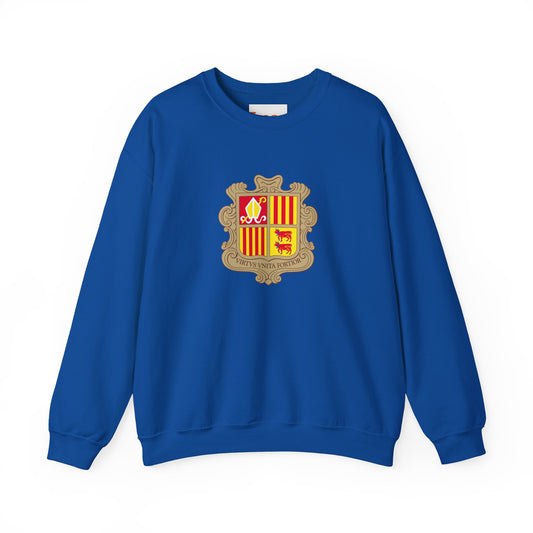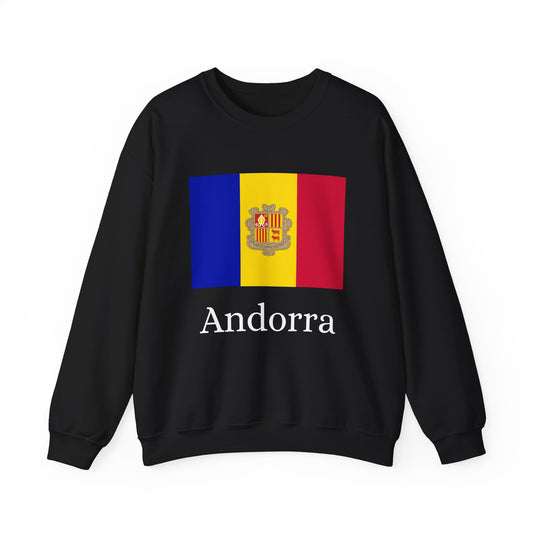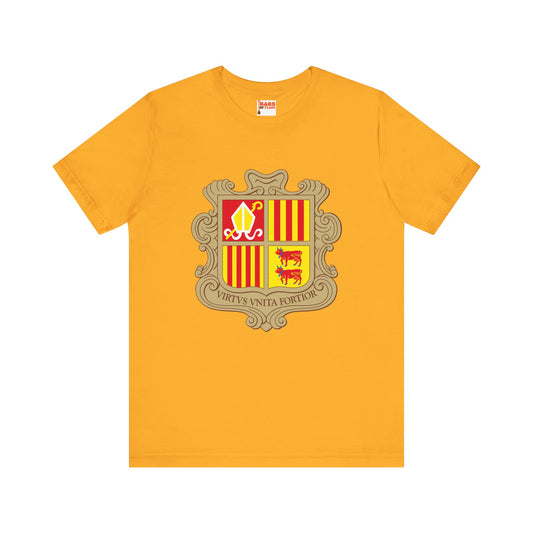-
Andorra Pillow
Regular price $22.65 USDRegular priceUnit price / per -
Andorra Backpack
Regular price $59.79 USDRegular priceUnit price / per -
Andorra Leather Patch Hat
Regular price $18.85 USDRegular priceUnit price / per -
Andorra Mug
Regular price $11.65 USDRegular priceUnit price / per -
Andorra Trucker Cap
Regular price $14.90 USDRegular priceUnit price / per -
Andorra Coat-of-Arms Sweatshirt
Regular price $34.15 USDRegular priceUnit price / per -
Andorra Flag Sweatshirt
Regular price $34.15 USDRegular priceUnit price / per -
Andorra Sweatshirt
Regular price $34.15 USDRegular priceUnit price / per -
Andorra Hoodies
Regular price $34.40 USDRegular priceUnit price / per -
Andorra T-shirts
Regular price $22.79 USDRegular priceUnit price / per -
Andorra Flag Hoodies
Regular price $34.40 USDRegular priceUnit price / per -
Andorra Flag on T-shirt
Regular price $22.79 USDRegular priceUnit price / per -
Andorra Coat-of-Arms Hoodies
Regular price $34.40 USDRegular priceUnit price / per -
Andorra Coat-of-Arms Inspired T-shirt
Regular price $22.79 USDRegular priceUnit price / per
Collection: Andorra
The Andorra flag, also known as the flag of Andorra, is a colorful and significant symbol for the country. It holds a rich history, deep symbolism, and specific protocols for its display and handling.
Overview of the Andorra Flag

The national flag of Andorra is composed of a tricolor design, featuring three vertical bands of blue, yellow, and red, each of equal width. These vibrant colors are not just for show; they carry deep meaning and represent the essence of Andorra, its history, and its people. The centerpiece of this flag is the national coat of arms, which elegantly overlaps the bands, firmly positioned in the yellow middle stripe.
This inclusion of the coat of arms is not merely decorative but a symbolic representation of Andorra's governance and heritage, embodying the country's values and identity. The juxtaposition of these elements creates a visually striking and meaningful banner that the Andorran people hold dear, serving as a daily reminder of their nation's unity and distinctiveness. This flag not only embodies the physical characteristics of Andorra but also tells a story of resilience, cooperation, and national pride, making it a fundamental emblem of the country's identity on the global stage.
Historical Context of the Andorra Flag

The journey to the Andorra flag we recognize today extends deep into the nation's history, reflecting its unique political and cultural landscape. The flag, with its current design, was officially adopted on July 27, 1993, marking a significant milestone in Andorra's national identity. Prior to this date, variations of the flag existed, but it was the 1993 design that solidified the symbols and colors significant to Andorra.
The roots of Andorra's flag intertwine with the medieval era, during a time when the region was under the co-sovereignty of the Bishop of Urgell and the Count of Foix. This arrangement is uniquely mirrored in the flag's color scheme, with blue and red representing the influential roles of these co-princes over the centuries. The yellow band, inserted between the blue and red, symbolizes Andorra's pursuit of independence and sovereignty, a testament to its enduring spirit amidst powerful neighbors.
Over the years, the flag has undergone modifications, but the essence of its symbolism has remained steadfast. It reflects a blend of allegiance to historical rulers and a celebration of the country's autonomy. This evolution of the flag not only narrates the tale of Andorra's past sovereignties and political affiliations but also symbolizes its journey towards establishing a distinct national identity within the global community. The inclusion of the national coat of arms in the yellow band of the flag during its final adoption was a definitive statement of this identity, encapsulating the heritage and values of Andorra.
Symbolism Behind the Andorra Flag
At the heart of the Andorra flag lies a tapestry of meaning, woven through its colors and central emblem. The flag's blue stripe channels the spirit of freedom and serenity, reminiscent of the expansive skies and distant oceans that have inspired countless generations. Yellow, occupying the central band, illuminates the flag with its representation of prosperity and the sun's life-giving energy, reflecting the agricultural and industrial backbone of the nation. Red, vibrant and bold, underscores a fierce commitment to preserving the cultural traditions and values that define Andorra.
Central to the flag's symbolism is the coat of arms, a detailed mosaic that ties the nation's present to its historical roots. The bishop's mitre and crosier acknowledge the enduring influence of the Bishop of Urgell, while the trio of red cows stands as a tribute to the Count of Foix, heralding the shared governance and protection that have shaped Andorra's history. Each element of the flag, from color to symbol, is a chapter in Andorra's ongoing story, a narrative of unity, resilience, and the enduring pursuit of identity.
Current Relevance of the Andorra Flag
Today, the flag of Andorra continues to be a powerful symbol at the heart of national identity and pride. It is ubiquitously present at significant national events, from state ceremonies to public holidays, where it stands as a beacon of unity and continuity for the Andorran people. The flag's importance transcends mere representation; it is deeply ingrained in the fabric of daily life, appearing in educational settings, on public buildings, and at international gatherings where Andorra is represented.
Despite debates over potential modifications to reflect evolving societal values, the flag remains unchanged, signifying a steadfast link to Andorra's heritage and traditions. Its role extends beyond the national borders, serving as a distinctive emblem of Andorra in the global community, symbolizing the country's sovereignty, history, and cultural richness. The flag's enduring presence in military parades and diplomatic engagements underscores its significance as a symbol of national honor and international diplomacy. The ongoing discussions around the flag reflect a vibrant democratic spirit, showcasing the active engagement of Andorrans in the narrative and symbolism of their national flag.
Additional Facts About the Andorra Flag
The protocols for displaying the Andorra flag include strict rules to ensure it is always shown with respect. It should never be displayed in a manner that would allow it to touch the ground or be hung in a way that disrespects its symbolism. Additionally, when flown alongside other flags, it must be positioned in a place of honor, reflecting Andorra’s sovereignty and pride. Interestingly, while Andorra has a significant relationship with the European Union, it remains distinct by flying its national flag, often alongside the EU flag, to signify its unique status and cooperation with the EU.
Another unique aspect is the legal requirement for the flag to be flown on all public buildings, ensuring its omnipresence throughout the country and reinforcing its role as a symbol of national unity and identity. Despite controversies, such as the proposed removal of the coat of arms, the flag has remained unchanged, a testament to its enduring significance to the Andorran people. These facts highlight the deep respect and protocols surrounding the flag, emphasizing its importance not just as a national symbol, but as a cornerstone of Andorra’s identity and values.




























